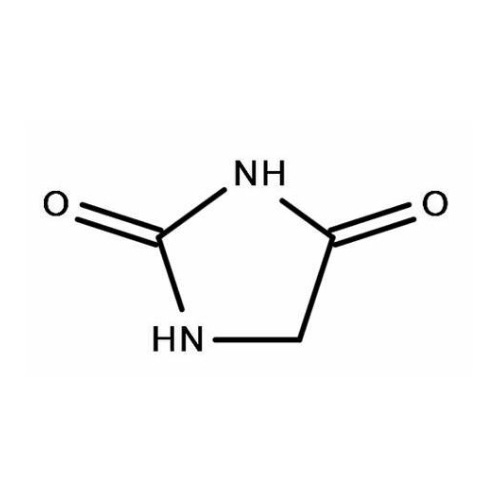
- English
- Español
- Português
- русский
- Français
- 日本語
- Deutsch
- tiếng Việt
- Italiano
- Nederlands
- ภาษาไทย
- Polski
- 한국어
- Svenska
- magyar
- Malay
- বাংলা ভাষার
- Dansk
- Suomi
- हिन्दी
- Pilipino
- Türkçe
- Gaeilge
- العربية
- Indonesia
- Norsk
- تمل
- český
- ελληνικά
- український
- Javanese
- فارسی
- தமிழ்
- తెలుగు
- नेपाली
- Burmese
- български
- ລາວ
- Latine
- Қазақша
- Euskal
- Azərbaycan
- Slovenský jazyk
- Македонски
- Lietuvos
- Eesti Keel
- Română
- Slovenski
- मराठी
- Srpski језик
Why Does 5-Propylhydantoin Matter in Modern Chemical Applications?
2025-09-11
5-Propylhydantoin is a fine chemical compound belonging to the hydantoin family, a group of heterocyclic organic compounds widely recognized in pharmaceutical and industrial chemistry. This compound is defined by its five-membered ring containing nitrogen atoms and a propyl side chain at the fifth carbon. Its molecular formula is C7H12N2O2, and it has a molecular weight of approximately 156.19 g/mol.
From a chemical perspective, the unique structure of 5-Propylhydantoin offers a combination of stability and reactivity that makes it versatile for different applications. Hydantoins in general have been historically utilized in anticonvulsant drugs, intermediates for agrochemicals, and synthetic building blocks for specialty chemicals. Specifically, 5-Propylhydantoin is valued as an intermediate in pharmaceutical research and as a raw material for specialty synthesis.
The physical characteristics of this compound further highlight its usefulness: it is typically a crystalline powder with good solubility in organic solvents, moderate stability under ambient conditions, and reliable compatibility with other reactive agents in laboratory and industrial settings. Its adaptability is a key reason why researchers and manufacturers frequently turn to this compound in their chemical development projects.
In the global marketplace, compounds like 5-Propylhydantoin are gaining increasing attention as industries push for innovation in drug discovery, polymer science, and specialty intermediates. Its role in streamlining synthetic pathways makes it a cost-effective and reliable choice for industries seeking high-performance raw materials.
How Is 5-Propylhydantoin Applied in Industry and Research?
The true value of 5-Propylhydantoin lies in its diverse applications across multiple sectors. Below are the main industries where it plays a significant role:
a) Pharmaceutical Industry
In pharmaceuticals, 5-Propylhydantoin is primarily used as a synthetic intermediate. Hydantoin derivatives have well-documented pharmacological properties, and 5-Propylhydantoin serves as a precursor in the synthesis of molecules with potential anticonvulsant, antimicrobial, and antitumor activity. By serving as a flexible building block, it simplifies complex synthetic routes, reducing time and cost in drug development pipelines.
b) Agrochemical Research
The compound has utility in agrochemical formulations, where it acts as a precursor to active ingredients in herbicides and pesticides. The stability of the hydantoin backbone ensures controlled release and enhanced efficacy, which aligns with modern agricultural needs for efficient and environmentally responsible products.
c) Polymer and Material Science
In material research, 5-Propylhydantoin is used in polymer synthesis and specialty materials. Hydantoins have demonstrated flame-retardant properties and UV resistance, making them valuable additives in coatings and plastics. 5-Propylhydantoin contributes to improving structural stability while maintaining lightweight features in advanced materials.
d) Laboratory and Fine Chemical Research
In laboratories, the compound is used as a reference standard and as a starting material for chemical modifications. Its well-defined structure and predictable reactivity patterns make it an excellent candidate for designing analogs and testing reaction mechanisms in organic chemistry research.
To provide a clear summary of its technical specifications, here are the standard parameters associated with 5-Propylhydantoin:
| Parameter | Specification |
|---|---|
| Chemical Name | 5-Propylhydantoin |
| Molecular Formula | C7H12N2O2 |
| Molecular Weight | 156.19 g/mol |
| Appearance | White to off-white crystalline powder |
| Purity (HPLC) | ≥ 98% |
| Solubility | Soluble in ethanol, methanol, chloroform |
| Melting Point | 180 – 185 °C (approx.) |
| Stability | Stable under normal storage conditions |
| Storage Conditions | Store in a cool, dry place, away from light |
These parameters demonstrate its suitability for demanding applications where consistency and reliability are non-negotiable.
Why Choose 5-Propylhydantoin Over Other Hydantoin Compounds?
With multiple hydantoin derivatives available, one may ask: why does 5-Propylhydantoin stand out? The answer lies in a combination of its unique side chain modification, balance of reactivity and stability, and broad application profile.
Enhanced Chemical Stability
The propyl group substitution enhances its chemical stability compared to unsubstituted hydantoins. This translates into better shelf life and consistent performance under industrial conditions.
Versatile Reactivity
While stability is a major benefit, 5-Propylhydantoin maintains sufficient reactivity to participate in diverse synthetic pathways. This dual advantage makes it adaptable across pharmaceutical and agrochemical sectors without requiring extensive re-optimization of reaction conditions.
Cost-Effectiveness
By acting as an efficient intermediate, it reduces the overall cost of downstream synthesis. Industries benefit from its ability to streamline chemical reactions, reducing waste and saving valuable research time.
Regulatory Considerations
Hydantoin derivatives have a long history of study and documented safety profiles in regulated industries. This background supports the adoption of 5-Propylhydantoin in highly controlled environments, especially pharmaceuticals.
In essence, choosing 5-Propylhydantoin ensures a balance of innovation and reliability. It supports the dual needs of high-performance chemistry and scalable manufacturing, positioning it as a preferred option for global industries.
Frequently Asked Questions (FAQ) and Final Insights
FAQ 1: What makes 5-Propylhydantoin important in pharmaceutical development?
5-Propylhydantoin is crucial in pharmaceutical development because it acts as a stable yet reactive synthetic intermediate. Its propyl side chain offers unique structural properties that help in creating potential anticonvulsant and antimicrobial agents. This combination allows researchers to design new drugs efficiently while minimizing synthesis challenges.
FAQ 2: How should 5-Propylhydantoin be stored to ensure product quality?
The compound should be stored in a cool, dry environment, away from direct sunlight and sources of moisture. Proper storage ensures stability and prevents degradation, maintaining its ≥98% purity level. When handled according to recommended conditions, the compound retains its quality for extended periods, making it dependable for laboratory and industrial use.
5-Propylhydantoin is more than just a chemical compound—it is a versatile building block that bridges pharmaceutical innovation, agrochemical advancements, and material science applications. With its reliable stability, cost-effectiveness, and wide-ranging reactivity, it continues to serve as a cornerstone in modern chemical development.
At Leache, we are committed to supplying high-quality 5-Propylhydantoin with rigorous quality control, ensuring consistency for your research and industrial projects. For more detailed specifications, bulk inquiries, or tailored solutions, we invite you to contact us today and explore how our expertise can support your success.




